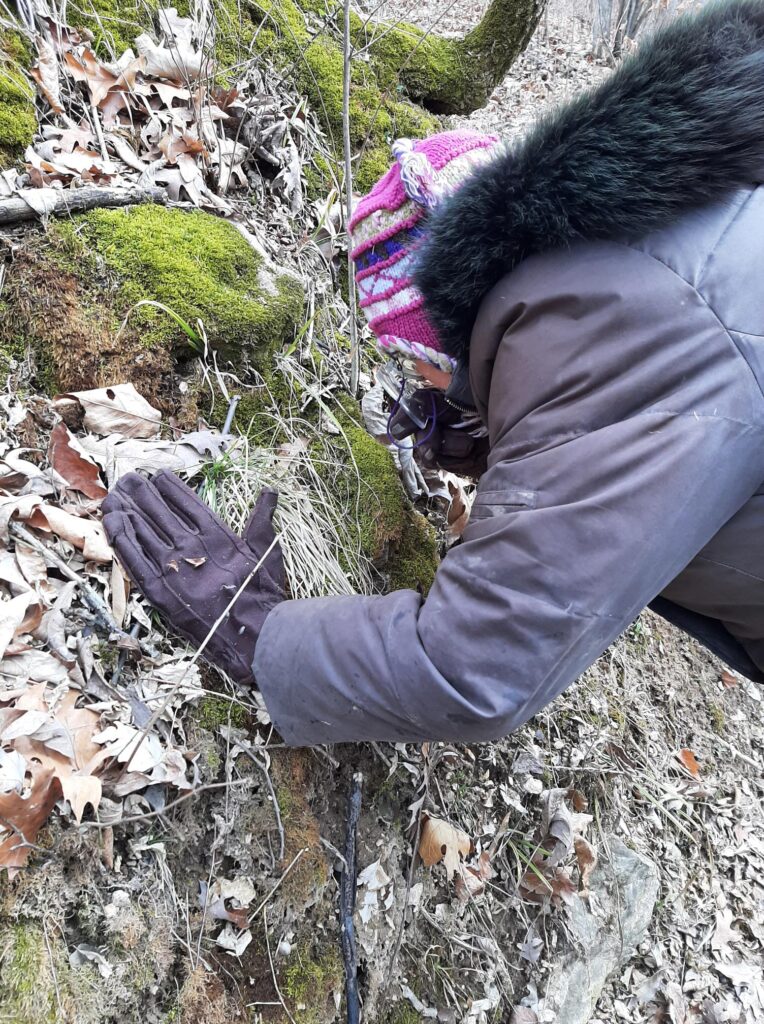Self-guided Moss Walk Popular with Wild Haven Visitors
by Joanna Reuter
If your best guess for the definition of “acrocarp” involves something about a gymnastically talented fish, then you should consider taking part in the recently developed self-guided moss walk at Wild Haven Nature Area. You’ll learn what an acrocarp actually is, but the walk isn’t about memorizing scientific jargon. Instead, it’s an opportunity to become enthralled with the small, beautiful, and interesting world of mosses, and to learn about their importance for birds.
Hikers who have completed the trail have been wowed by the experience. Here are quotes from some:
“[M]y friends and I took the Moss Walk yesterday—it was so much fun! And we learned to appreciate the moss under our feet-and everywhere else! You did such a great job of providing the directions and information!”
“The descriptions are interesting and give some really useful information. We have a loupe and enjoyed looking at mosses close up as well as watching some change from brown to bright green in literally seconds as we poured water on them. (I have videos!) I took way too many pictures and plan to do a little study in my nature journal of some of the ones we saw.”
On a cold March day, members of the Hawthorn chapter of the Native Plant Society followed the moss walk trail.
“We met a gentleman who said he took care of the nature area—he said there had been quite a few people out taking the walk!” Later the same person sent this email: “We are returning from Sonoma today. While we were here we hiked in the redwood forest. They’ve had so much rain here that the moss was incredible! And thanks to you, we had so much appreciation and enjoyment of it!”
“I so enjoyed the brisk day and wonderful company. My favorite moss is now seductrix!!!” —From a participant on the Hawthorn chapter of the Native Plant Society’s field trip for the moss walk, which occurred on a frigid, flurrying March day.
This walk has attracted interest from members of a number of organizations, including Wild Ones, the Missouri Native Plant Society, and the Missouri Master Naturalists. Enthusiastic responses also came in from folks who hadn’t yet had a chance to do the hike but were excited to do so.
How to take part
If you haven’t yet done the moss walk, why wait until ticks get bad and warblers get good? Early spring is a great time to learn about mosses and why they’re important to birds.
The trail guide is formatted to be easily read on a mobile device such as a phone (with the goal of saving paper; please don’t print it). Download the trail guide here.
For those without smartphone capabilities, one laminated copy of the trail guide will soon be available on-site. Please return it to the designated location after use.
The total length of the hike is under a mile, but it’s easy for time to fly when examining mosses, so plan for at least a couple of hours on-site.
We suggest that you bring:
—A hand lens or magnifying glass. This will help you appreciate the miniature world of mosses.
—A spray bottle with water (but no chemical residues). Use to rehydrate mosses when conditions are dry; watch the leaves swell with water in front of your eyes.
—A water bottle for yourself, plus snacks, standard hiking gear, and binoculars for the birds.
No bathrooms or potable water are available at Wild Haven.
Louise Flenner developed this trail to share her knowledge and enthusiasm about mosses and their importance to birds. Thanks, Louise!

